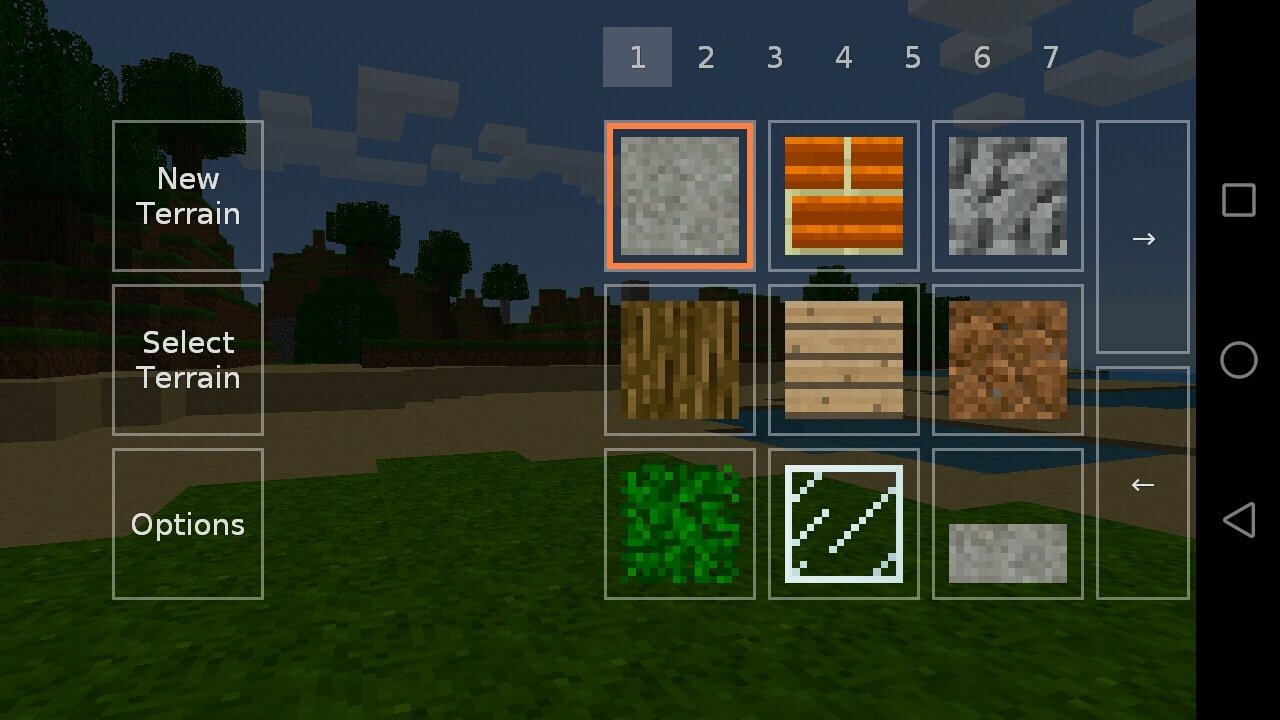- Run Emulator Android Studio Mac
- Run Android Emulator Mac Download
- React Native Run Android Emulator Mac
- Run Android Emulator Mac Os
Andy Android Emulator for Mac. Andy is a high-end Android Emulator. It’s a powerful as well as a heavy Android Emulator designed for Mac and PC. Andy Emulator comes as a package installer with many apps. It works on a separate Virtual Machine, so the installer file will be much high compared to other Android Emulators. Mac compatibility: Sounds obvious, but not all emulators run on macOS. If you'd like a little more information about using these emulators, take a look at How to run Android apps on Mac. Bluestacks-android Emulator For Pc And Mac-player Stream Watch. Bluestacks App Player is one excellent application software that was created to solve a seriously challenging problem among Android users. This emulator converts your Windows and Mac computers into an Android environment where you will be able to run.apk files effortlessly.
-->This guide explains how to prepare the Android Emulator for testing your app.
Overview
The Android Emulator can be run in a variety of configurationsto simulate different devices. Each configuration is called a virtualdevice. When you deploy and test your app on the emulator, you selecta pre-configured or custom virtual device that simulates a physicalAndroid device such as a Nexus or Pixel phone.
The sections listed below describe how to accelerate the Androidemulator for maximum performance, how to use the Android Device Managerto create and customize virtual devices, and how to customize theprofile properties of a virtual device. In addition, a troubleshootingsection explains common emulator problems and workarounds.
Sections
Hardware Acceleration for Emulator Performance
How to prepare your computer for maximum Android Emulator performanceby using either Hyper-V or HAXM virtualization technology. Because theAndroid Emulator can be prohibitively slow without hardwareacceleration, we recommend that you enable hardware acceleration onyour computer before you use the emulator.

Managing Virtual Devices with the Android Device Manager
How to use the Android Device Manager to create and customize virtualdevices.
Editing Android Virtual Device Properties
Steinberg ur22 mk2 driver mac. How to use the Android Device Manager to edit the profile properties of avirtual device.
Android Emulator Troubleshooting
In this article, the most common warning messages and issues that occurwhile running the Android Emulator are described, along withworkarounds and tips.
Note
If you are using a Mac with an Apple chip, such as the M1, you will need to install the Android Emulator for M1 preview from GitHub.
After you have configured the Android Emulator, seeDebugging on the Android Emulatorfor information about how to launch the emulator and use it for testingand debugging your app.
Note
As of Android SDK Tools version 26.0.1 and later, Google has removed support for existing AVD/SDK managers in favor of their new CLI (Command Line Interface) tools. Because of this deprecation change, Xamarin SDK/Device Managers are now used instead of Google SDK/Device Managers for Android Tools 26.0.1 and later. For more information about the Xamarin SDK Manager, see Setting up the Android SDK for Xamarin.Android.
If you've been looking for a way to develop your Xamarin Android apps in a Parallels Desktop Windows VM, but run the app in an Android emulator on your Mac, this post is an attempt to distill the information from across multiple sites to get you started.
Many thanks to James Montemagno for pointing me to Paul Batum's post on the Xamarin forum.
My Configuration
- Intel MBP running OS X Mavericks
- Parallels Desktop running a Windows 8 VM
Set up your Mac
1. Download & Install the Android SDK
Nothing can get done until the Android SDK is installed, so let's start there.

Install the Android SDK
You should end up with an SDK directory somewhere on your Mac with subdirectories like: extras, platform tools, tools, etc.
Yeah? -- Okay. Next.
2. Install the Intel HAXM
Intel HAXM - What?
Intel Hardware Accelerated Execution Manager. In short, it speeds up Android app emulation on Intel host machines. This step is necessary if you plan on creating custom AVDs that leverage the much faster Intel x86 images.
Install the Intel OS X HAXM Zip
Do you use OS X Mavericks + Parallels Desktop 9 ?
Install the OS X 10.9 HAXM Hotfix
If you don't do this, when you launch an Intel x86 emulator image, your entire computer will freeze up forcing you to perform a hard reboot. No one wants that.
3. Configure your Mac for SSH sharing
In OS X Go To:
System Preferences > Sharing > Enable Remote Login
Leave the other options set to their defaults.
4. Start the Android emulator
Several AVDs came pre-configured when you installed the Android SDK. For the sake of this tutorial, we'll use one of those devices which use ARM images. To view the configured devices, start the AVD Manager:
Open a command line
Navigate to the tools directory of your Android SDK: yourandroidsdkdirectory/tools
Enter the following command:
./android avd
The AVD Manager will open
Start an Android device:
- select a device with a green check
- press Start..
- the Launch Options dialog will appear. Press Launch
Earlier, we installed HAXM which allows the use of the Intel x86 images which run much faster than their ARM counterparts. If you'd like to try those out: open the SDK Manager, download the x86 images, then configure devices in the AVD Manager to use the x86 images instead of the ARM images.
Open a command line
Navigate to the tools directory of your Android SDK: yourandroidsdkdirectory/tools
Enter the following command:
./android
Adobe incopy. download the x86 images
edit a device in the AVD Manager to use an x86 image instead of an ARM image
5. Kill the ADB Server
Open a command line
Navigate to the platform-tools directory of your Android SDK: yourandroidsdkdirectory/platform-tools
Enter the following command:
./adb kill-server

Okay! -- Your Mac is ready.
Set up you Windows VM
1. Start your Windows VM in Parallels Desktop
2. Download and install PuTTY SSH Client
Install the PuTTY SSH Client
3. Create a new connection to your Mac
Run Emulator Android Studio Mac
Let's connect to the Mac.
- Start PuTTY SSH Client
- Select Session from the Category panel on the left
- In the Host Name (or IP Address) field, enter the IP Address of you Mac (found at: System Preferences > Sharing)
- Leave the Port set to its default (should be 22)
- Make sure SSH is selected under Protocol
4. Configure port forwarding
Select Connection > SSH > Tunnels from the Category panel on the left side of the PuTTY SSH Client. From here add two forwarding configurations.

First
- Source Port: 5555
- Destination: localhost:5555
Second
Source Port: 5554
Destination: localhost:5554
Click on Open
You will be presented with a command line console. When prompted, enter your Mac admin username and password to open a connection from your Windows VM to OS X.
5. Kill then Start the ADB Server
Open a command line
Navigate to the platform-tools directory of your Android SDK: yourandroidsdkdirectory/platform-tools
Enter the following command:
adb.exe kill-server
Then enter the following command:
adb.exe start-server
Confirm that your Mac emulator device has been picked up by entering the following command:
adb.exe devices
You should see a device listed something like: emulator-5554
6. Open a Xamarin Android project
Now for the big test!
Launch your Xamarin IDE of choice and open a Xamarin Android project. Once the project initializes, you should see your already running Mac emulator listed in the device dropdown.
And that's it! -- You can debug all day long from Parallels over to your Mac.
The Bonus Round - Genymotion Emulator
Run Android Emulator Mac Download
The AVD emulator that comes with the Android SDK is fine, but it could be better. Enter Genymotion.
React Native Run Android Emulator Mac
The Genymotion emulator is noticably faster, but it requires some baggage: VirtualBox - which doesn't play well with Parallels Desktop 9 out of the box.
Run Android Emulator Mac Os
[Detailed tutorial coming soon]
Comments are closed.